|
Printing a mezzotint plate is not the easiest thing: it took me a while to understand how to obtain the result I wanted, through trial and error (I've had very little printing tuition). I got some great tips from Mezzotint Essentials by Robert De Groff, a book I strongly recommend. What I understood is that the most common mistake is to overwipe the plate, but let's start from the beginning. My favourite paper is Hahnemuehle, and I use Charbonnel 55981 ink softened with a little plate oil, so that the consistency is a little runny. Aside from when I am printing a proof, I always prepare the paper making a damp pack two days ahead of a printing session: I quickly pass the sheets of paper under a tap, then let them drip the excess water and store them in a plastic sleeve inside a bin bag, then I leave it under a board with a book on top. If done well, there is no need to blot the paper before printing: it will be damp but not shiny ( if shiny, it does need blotting before it's used). 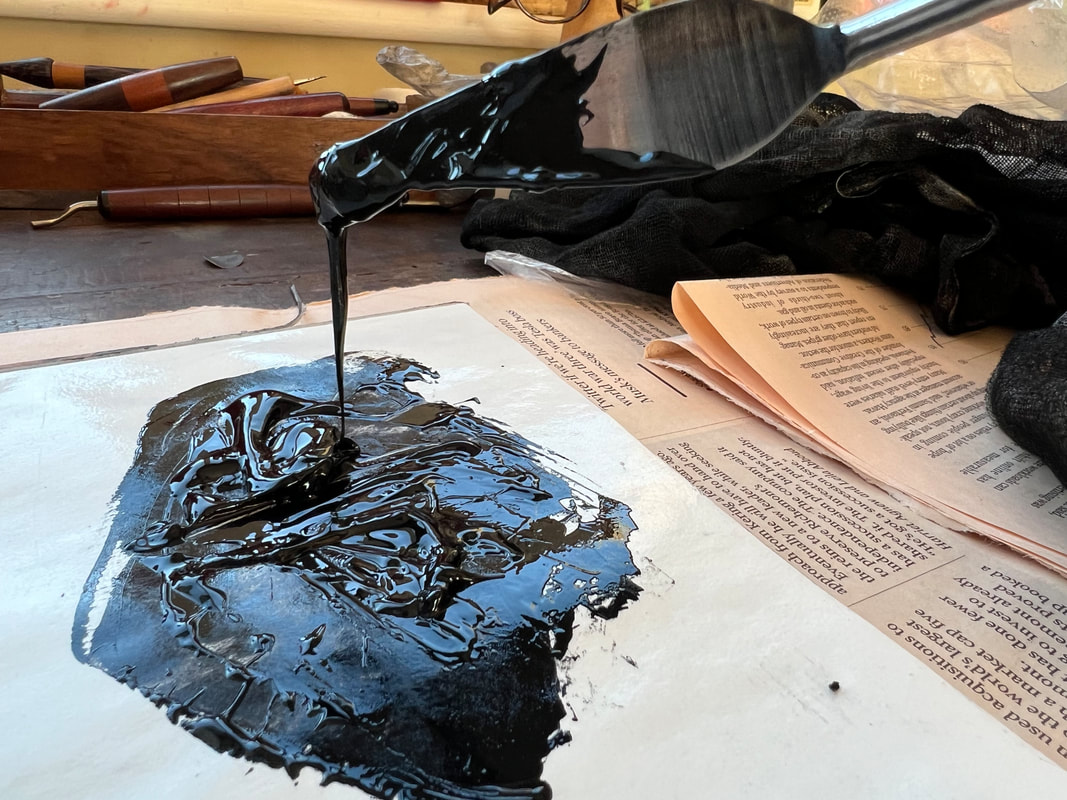 The ink should flow from the palette knife. The ink should flow from the palette knife. I use a disposable palette for mixing ink and a bit of cardboard for spreading it, so there's less cleaning afterwards. I also use clear plastic gloves for handling the plate and a different pair of gloves for handling the paper: no need of scrubbing the hands clean for every print. Something else to prepare beforehand is the registration sheet. Somehow the bottom of my plate is always filthy ! I draw the placement of plate and paper onto a larger piece of paper that I place on the bed of the press, then on top of it I put on a piece of clear acetate that I can wipe clean after each print. This is convenient when I am printing different plates, so I just slide a different registration sheet for each size of plate under the acetate. I don't own a professional hot plate: this is my low tech plate warmer. The plate should not be too hot that you can't even hold it, just warm. Once the surface is covered with ink I start wiping with a circular motion with the classic ball of tarlatan, and when the image appears I change motion to a swipe. As soon as the bulk of the ink has been removed, I take my gloves off and finish wiping with the palm of my hand, gently stroking the plate and wiping a little more with my fingers in the lighter areas. I don't use any chalk powder on my hand, I just wipe it on the apron before and between passes. I clean the sides of the plate with a piece of cloth on which I spilt a few drops of alcohol then place the plate on the press bed. I then wear the clean printing gloves and carefully place the paper over the plate, then a piece of cartridge paper on top as well as an extra piece of felt to add pressure. I have two blankets in the press, a light swanskin and a medium felt. I set my press tight: it's not a geared one, so I use all of my body to turn the wheel. And voila. The prints go in between cardboards and under a pile of books for a couple of days so that they dry flat. After printing I clean my plates sprinkling odourless mineral spirits and brushing with a soft toothbrush ( window open) and again with alcohol.
Oh, and I was forgetting the most important advice: give it a day ! Or at least a couple of hours. If you are printing the first proof, don't rush to clean the plate and start scraping everywhere again. A print always holds an element of surprise when we lift the paper off: allow the first proof to "sink in" and see if maybe it might suggest a slightly different direction,or level of finish. Maybe some precise detail is not needed, or the scene needs a little murkiness, less contrast, softer edges. Look at the proof with fresh eyes and be open to change your original plan.
0 Comments
|
Check the list below to see posts on these subjects.Categories
All
AuthorIlaria Rosselli Del Turco is an Italian painter living in London. |
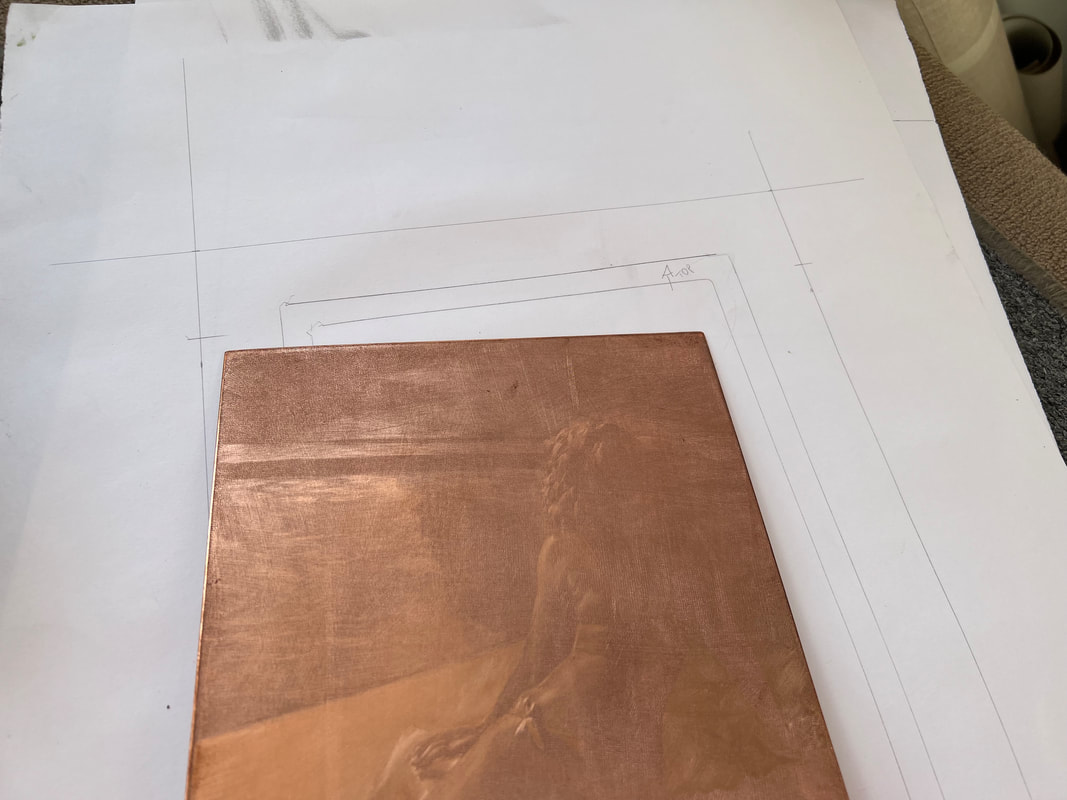
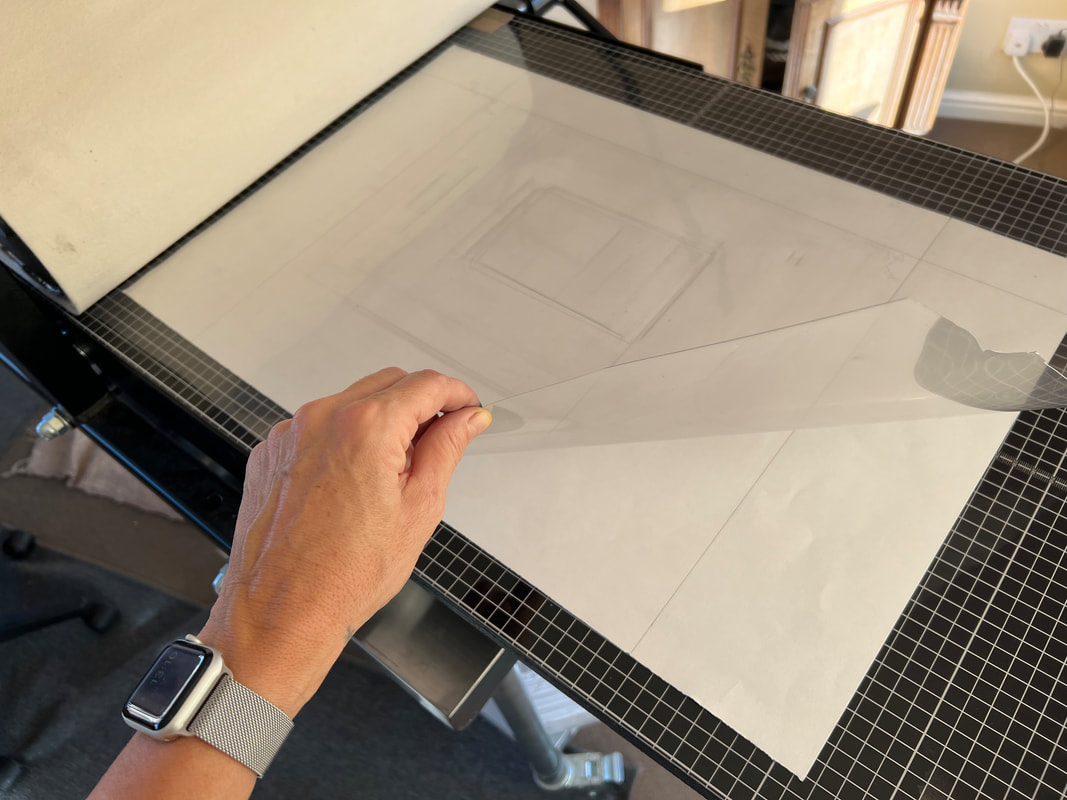
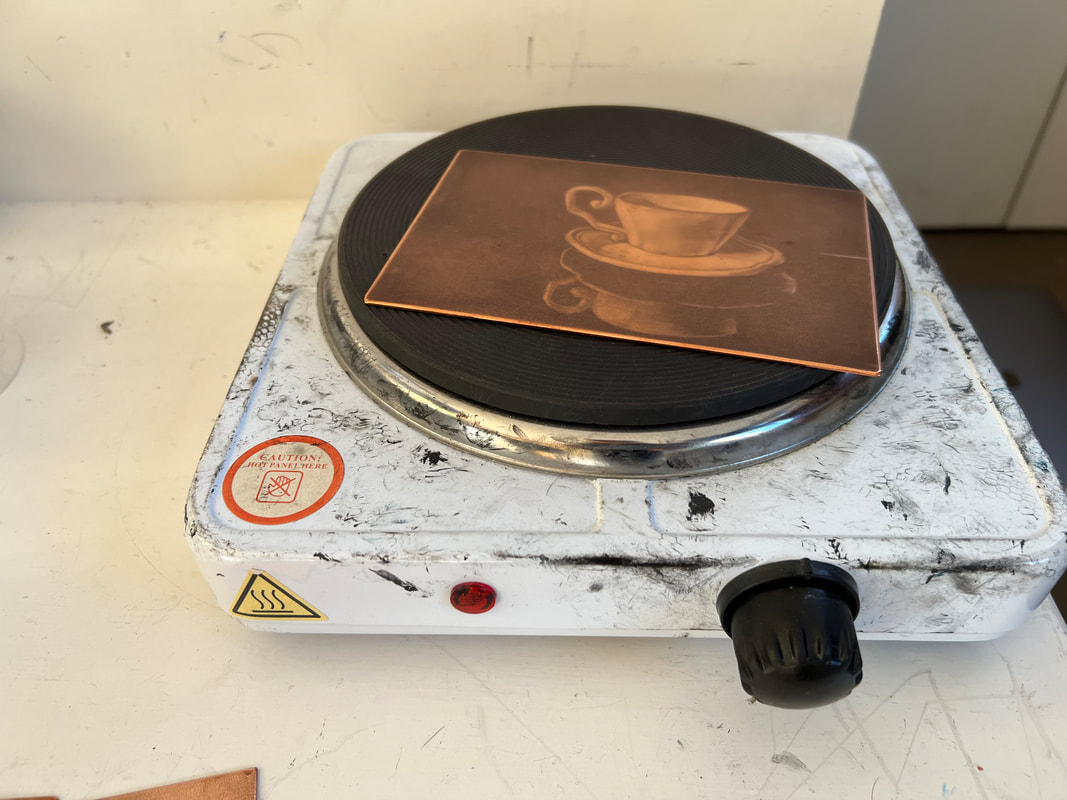
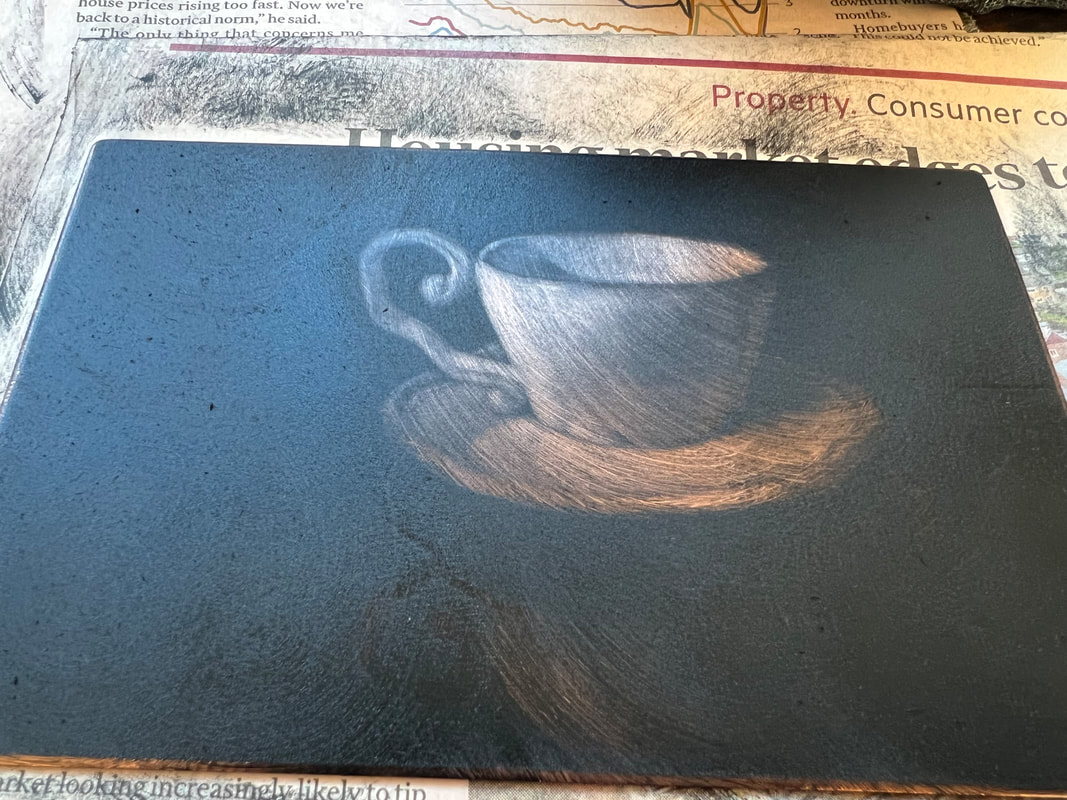
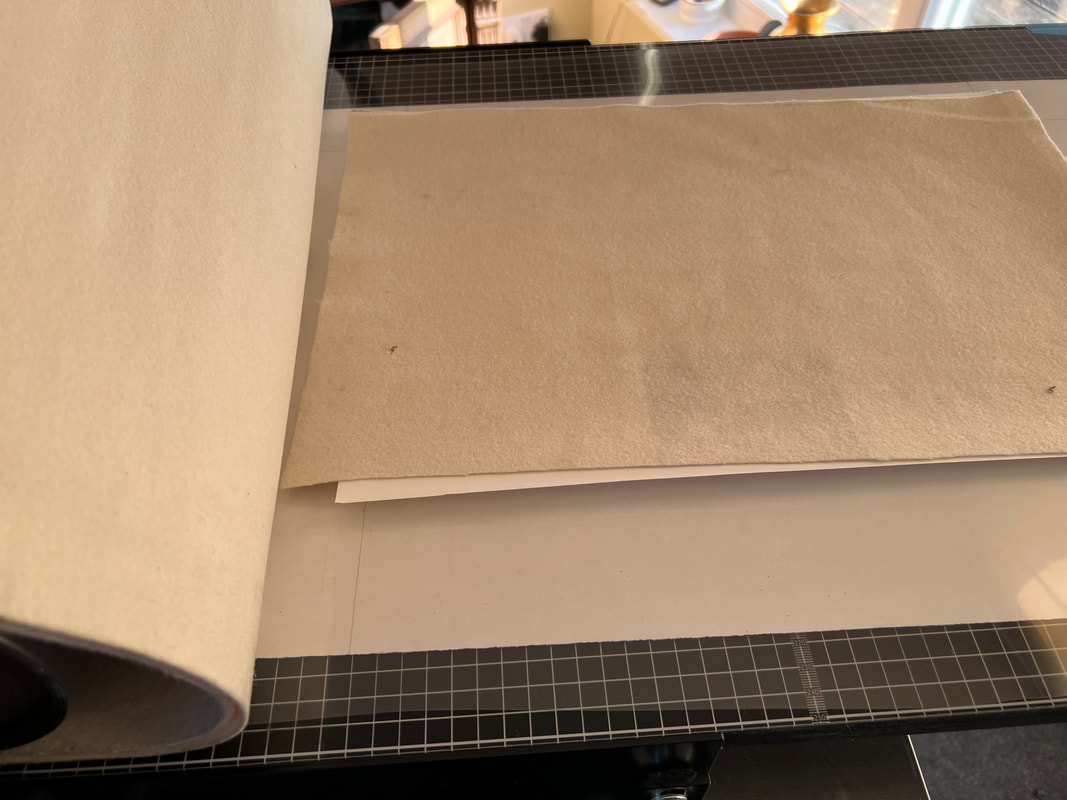
 RSS Feed
RSS Feed